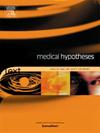Hyoid slump hypothesis: A rational approach to understanding obstructive sleep apnea and related airway disorders
IF 0.8
4区 医学
Q3 MEDICINE, RESEARCH & EXPERIMENTAL
引用次数: 0
Abstract
Obstructive sleep apnea (OSA) significantly affects health; however, its pathogenesis remains unclear. We propose the Hyoid Slump Hypothesis, which identifies the caudal displacement (“slump”) of the hyoid bone as a central etiological factor underlying OSA. Traditional models emphasize obesity and soft tissue redundancy in adults. In contrast, adenotonsillar hypertrophy is typically the primary cause of upper airway obstruction in children, although soft tissue factors become increasingly relevant with age and obesity. Accumulating evidence indicates that craniofacial development and neuromuscular function are critical for maintaining airway patency. Poor oral posture and dysfunctional breathing predispose individuals to a lower hyoid position, thereby reducing airway stability. Cephalometric radiography studies have consistently linked an increased mandibular plane-to-hyoid (MP-H) distance to OSA severity. Dynamic imaging methods have demonstrated significantly inferior hyoid displacement during airway collapse events. Therapeutic interventions targeting hyoid elevation, such as mandibular advancement, orthopedic maxillary expansion, hyoid suspension and myofunctional therapy, provide additional support. Despite promising evidence, limitations include reliance on observational data, lack of standardized measurement protocols, and the multifactorial nature of OSA. Prospective studies are needed to clarify causality, refine diagnostics, and guide individualized interventions. Confirmation of this hypothesis would enhance diagnostic precision, support early preventive strategies in childhood, and allow targeted therapeutic approaches tailored to the distinct anatomical phenotypes of airway obstruction.
舌骨塌陷假说:理解阻塞性睡眠呼吸暂停及相关气道疾病的合理途径
阻塞性睡眠呼吸暂停(OSA)严重影响健康;然而,其发病机制尚不清楚。我们提出舌骨塌陷假说,该假说认为舌骨的尾侧移位(“塌陷”)是OSA的主要病因。传统模型强调成人的肥胖和软组织冗余。相比之下,腺扁桃体肥大通常是儿童上呼吸道阻塞的主要原因,尽管软组织因素与年龄和肥胖的关系越来越密切。越来越多的证据表明颅面发育和神经肌肉功能对维持气道通畅至关重要。不良的口腔姿势和呼吸功能障碍易使个体舌骨位置较低,从而降低气道稳定性。头颅x线摄影研究一致认为,下颌平面到舌骨(MP-H)距离的增加与OSA严重程度有关。动态成像方法显示在气道塌陷事件中明显的下舌骨移位。针对舌骨抬高的治疗干预措施,如下颌骨推进、矫形上颌扩张、舌骨悬吊和肌功能治疗,提供了额外的支持。尽管有很好的证据,但局限性包括依赖于观测数据,缺乏标准化的测量方案,以及OSA的多因素性质。需要前瞻性研究来澄清因果关系,改进诊断,并指导个体化干预。这一假设的证实将提高诊断的准确性,支持儿童早期预防策略,并允许针对不同解剖表型的气道阻塞的靶向治疗方法。
本文章由计算机程序翻译,如有差异,请以英文原文为准。
求助全文
约1分钟内获得全文
求助全文
来源期刊

Medical hypotheses
医学-医学:研究与实验
CiteScore
10.60
自引率
2.10%
发文量
167
审稿时长
60 days
期刊介绍:
Medical Hypotheses is a forum for ideas in medicine and related biomedical sciences. It will publish interesting and important theoretical papers that foster the diversity and debate upon which the scientific process thrives. The Aims and Scope of Medical Hypotheses are no different now from what was proposed by the founder of the journal, the late Dr David Horrobin. In his introduction to the first issue of the Journal, he asks ''what sorts of papers will be published in Medical Hypotheses? and goes on to answer ''Medical Hypotheses will publish papers which describe theories, ideas which have a great deal of observational support and some hypotheses where experimental support is yet fragmentary''. (Horrobin DF, 1975 Ideas in Biomedical Science: Reasons for the foundation of Medical Hypotheses. Medical Hypotheses Volume 1, Issue 1, January-February 1975, Pages 1-2.). Medical Hypotheses was therefore launched, and still exists today, to give novel, radical new ideas and speculations in medicine open-minded consideration, opening the field to radical hypotheses which would be rejected by most conventional journals. Papers in Medical Hypotheses take a standard scientific form in terms of style, structure and referencing. The journal therefore constitutes a bridge between cutting-edge theory and the mainstream of medical and scientific communication, which ideas must eventually enter if they are to be critiqued and tested against observations.
 求助内容:
求助内容: 应助结果提醒方式:
应助结果提醒方式:


